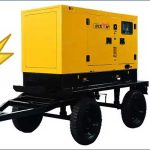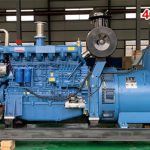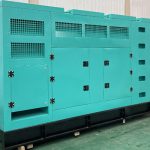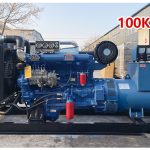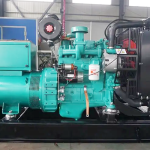Diesel generators are a common backup power device widely used in industrial, commercial, and domestic settings. They are often used to ensure the normal operation of equipment and facilities in response to power outages or the absence of grid power. So, how does a diesel generator work?
The diesel generator’s working principle is very simple. They generate mechanical energy by burning diesel and then convert this mechanical energy into electrical energy. Specifically, a diesel generator includes a diesel engine and a generator. When a diesel engine is started, fuel is injected into the cylinder and burned within the cylinder. The high-temperature and high-pressure gas produced by this combustion pushes the piston downward and drives the crankshaft to rotate. The rotational motion of the crankshaft is transmitted to the generator through the connecting rod, causing the wires in the generator to move in a magnetic field, thereby generating an electric current. In this way, the diesel generator converts mechanical energy into electrical energy and supplies it to equipment and facilities.
Although the diesel generator’s working principle is simple, its internal structure and working process are very complex. The design of the generator needs to take into account factors such as the power output of the diesel engine and the voltage and current output of the generator to ensure that the equipment can operate stably and reliably. In addition, diesel generators require regular maintenance and upkeep to ensure their performance and longevity.
Generally speaking, diesel generators are reliable backup power equipment that can provide continuous power support during power outages or the absence of grid power. By understanding the diesel generators working principle, we can better use and maintain this equipment to ensure the normal operation of equipment and facilities.






